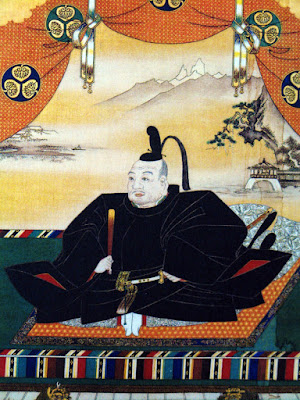Artist Research: Edo Period (context)
I've already some research about the Japanese artist Kitagawa Utamaro. For this reason, I thoguht that it was important to also understand the art and period he lived. Therefore, I made some research about the Edo period.
Edo Period (context)
After the death of Toyotomi Hideoyoshi (1598), a feudal lord and chief Imperial minister, Tokugawa Ieyasy became the most powerful man in Japan. In 1600, in the battle of Sekigahara, Ieyasu defeated Hideyori, the successor of Hideyoshi. As a result he obtained almost unlimited power and on March 24, 1603 he established his governement in Edo (Tokyo). It only came to an end after more than 250 years, in 1868, with the Meji Restoration.
This period of Japan's history is entitled Edo (江) or Tokugawa (徳) and it is characterized by the rule of the Tokugawa shogunate (absolute dictator), economic growth, strict social order, popular art, and isolation of foreign policies.
Despite being isolated, during the Edo period (especially during the Genroku era) the popular cultural grew and new forms of art such as kabuki and ukiyo-e became very popular.
Art of the Edo Period
Purchasers of Edo art varied between rich merchants, who were able to afford multipanel screens, and citizens, who could afford woodblock prints. Throught the observation of the world around them, the Edo period artists created artorks in different medium as screens, paintings and prints.
During this period there was a development of the urban culture. New forms of entertainement appeared such as the kabuki theater (classical form of Japanese dance-drama) and renga parties (連歌), which consists in a event where poetry is claimed. The tourism also developed in this period: travelers would visit shrines, temples and famous sites known as meisho(名所). These would consequently influence the paintings and prints of that period entitled as ukiyo-e (浮世絵,which literally means "pictures of the floating world" and that mirrored those practices. This was a genre for and about the middle class of the Edo period - the "common people".
One of the most famous ukiyo-e images is the woodblock print "The Great Wave of off Kanagawa" (1830- 1832) made by Katsushika Hokusai. This print is part of the series Thirty-Six Views of Mount Fuji and it is possible to distinguish three main elements: the Fuji Mountain that is placed in the background, the blue wave off Kanagawa, which dominates the frame, and the three small fishing boats. Here Hokusai played with perspective and made Mount Fuji look like it is being swallowed by the wave, but it also expressed his love and pride by Japan’s beauty and culture.
That is to say that the Edo period, especially the Kan'ei and Genroku eras (period from the 1620s to the early 1700s), Japan witnessed a major development in the arts, with a variety of mediums (paintings, ceramics, extiles and lacqueware).
I found really interesting that ukyio-e woodblock prints. I pretend to achieve a similar aesthetic in my artworks, even if it is made with a different media and period of time. I will try to adapt these to the art of the present moment.
References:
Coman S. (n.d.) A brief history of the arts of Japan: The Edo Period [online] Khan Academy, Available from: https://www.khanacademy.org/humanities/art-asia/art-japan/japanese-art/a/a-brief-history-of-the-arts-of-japan-the-edo-period [Accessed27.04.2021]
Art Museum (n.d.) The Art of Observation in the Edo Period (1600–1868) [part two] [online] Available from: https://artmuseum.princeton.edu/object-package/clone-art-observation-edo-period-1600%E2%80%931868/52623 [Accessed 27.04.2021]
Kwata T. (n.d.) Toyotomi Hideyoshi [online] Britannica, Available from:https://www.britannica.com/biography/Toyotomi-Hideyoshi [Accessed 27.04.2021]
Lumen (n.d.) The Edo Period [online] Available from: https://courses.lumenlearning.com/boundless-arthistory/chapter/the-edo-period/#:~:text=With%20the%20rise%20of%20popular,to%20courtesans%20and%20famous%20landscapes. [Accessed 27.04.2021]
Japan-guide.com (n.d.) Edo Period (1603-1868) [online] Available from: https://www.japan-guide.com/e/e2128.html [Accessed 27.04.2021]
Metmuseum (2003) Art of the Edo Period (1615–1868) [online] Available from: https://www.metmuseum.org/toah/hd/edop/hd_edop.htm [Accessed 27.04.2021]
Dictionary (n.d.) Kabuki theater[online]Availabel from: https://www.dictionary.com/e/pop-culture/kabuki-theater/#:~:text=Kabuki%20is%20a%20form%20of,by%20showmanship%20than%20by%20content. [Accessed 28.04.2021]




Comments
Post a Comment